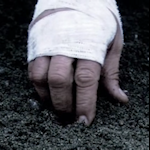-
Posts
21 -
Joined
-
Last visited
Reputation Activity
-
 plyoung reacted to Pufty2 in Affinity Suite V2 on Linux [ Wine ]
plyoung reacted to Pufty2 in Affinity Suite V2 on Linux [ Wine ]
You're amazing! I'm no linux expert, but I've been longing for a way to get Affinity working on Linux and it finally did last night! Granted there were issues along the way and somehow ChatGPT helped me at least locate the issue (not solve it), so I got everything working even if it is a bit buggy! Massive thanks for this opportunity to resume work in a much more comfortable environment! This was the last roadblock to being 100% on linux. I was so elated last night I took a screenshot, but couldn't post the success, because I couldn't get my logins to the forum anymore and locked myself from trying 😅
Anyways here's my late night victory... 'design'
-
 plyoung got a reaction from Wanesty in Affinity Suite V2 on Linux [ Wine ]
plyoung got a reaction from Wanesty in Affinity Suite V2 on Linux [ Wine ]
Krita looks good for my needs. Inkscape is weird though, yes.. I really like Designer's interface and workflow. Will miss it.
Almost all my tools are now free/open source - I do gamedev. Only hold outs were Unity (which I switched from to Godot); Affinity, which I would instantly buy an upgrade for if it was on Linux; and Spine2D, which has a Linux version, so all good there.
-
 plyoung got a reaction from Wanesty in Affinity Suite V2 on Linux [ Wine ]
plyoung got a reaction from Wanesty in Affinity Suite V2 on Linux [ Wine ]
Some feedback on my experience on Bazzite (bazzite-nvidia:stable - Fedora Linux 40 (Kinoite) x86_64)
I used wine-builder for the build/compiling step and then followed the rest of installation guide. It looks like corefonts and vcrun2015 failed during the `winetricks dotnet48 corefonts vcrun2015` step since they did not download properly so I manually downloaded those. Corefonts is needed else app will crash when you try create new file and vcrun2015 is needed else it crash when you try export png or jpg for example.
Corefonts I grabbed from https://sourceforge.net/projects/corefonts/files/the fonts/final/
These go into /home/YOUR_USER_NAME/.cache/winetricks/corefonts/
Vcrun you get from https://www.microsoft.com/en-us/download/details.aspx?id=52685
and place the two files into /home/YOUR_USER_NAME/.cache/winetricks/vcrun2015/
If your dotnet failed to install you need to download dotnet40 and dotnet48 and place those into the similarly named folders in .cache/wintricks as shown above for the fonts and vc.
Now run the winetrics command on each to install them.
rum ElementalWarrior-8.14 $HOME/.wineAffinity winetricks corefonts rum ElementalWarrior-8.14 $HOME/.wineAffinity winetricks vcrun2015 So far so good. Have only tested creating an image, saving it, and exporting it to png. It does not seem like preferences are being saved. As a test I chose WARP under performance renderer and after restart it was back to showing my GPU as entry.
I'll probably just try get used to Krita and Inkscape since I have no plans to return to Windows, after having switched from it 2 weeks ago, and it does not seem like we will ever get proper Linux versions of Affinity.
-
 plyoung reacted to Daegalus in Affinity Suite V2 on Linux [ Wine ]
plyoung reacted to Daegalus in Affinity Suite V2 on Linux [ Wine ]
Glad my docker image still works. I should probably do a refresh of it so it gets updated packages in the base.
-
 plyoung got a reaction from Dave Vector in Ability to export icon files (*.ico) in Designer
plyoung got a reaction from Dave Vector in Ability to export icon files (*.ico) in Designer
+1 ..Game developers need this since we need .ico to upload to Steam for example. If you are going to implement this then you need to support multi-res. That is, I need to be able to include 16x16, 32x32, 64x64, 128x128, and 256x256 resolutions in the one file.
Probably not high priority though since there are a lot of online generators for this. I actually currently use GIMP to export the .ico files. Krita also supports it but does not seem to handle multires (although I did not research this to deeply since Gimp worked).
-
 plyoung got a reaction from nosey_gamedev in Ability to export icon files (*.ico) in Designer
plyoung got a reaction from nosey_gamedev in Ability to export icon files (*.ico) in Designer
+1 ..Game developers need this since we need .ico to upload to Steam for example. If you are going to implement this then you need to support multi-res. That is, I need to be able to include 16x16, 32x32, 64x64, 128x128, and 256x256 resolutions in the one file.
Probably not high priority though since there are a lot of online generators for this. I actually currently use GIMP to export the .ico files. Krita also supports it but does not seem to handle multires (although I did not research this to deeply since Gimp worked).
-

-

-
 plyoung got a reaction from Old Bruce in Automation in export persona
plyoung got a reaction from Old Bruce in Automation in export persona
I accidentally discovered that a layer named "foo/bar" would export "bar.png" in to a sub-folder called "foo". This is pretty useful to know.
Can someone please point me to where in the docs this info is provided because I'd love to know what other things might be possible through naming layers a certain way but just can not find it.
-
 plyoung reacted to Wanesty in Affinity Suite V2 on Linux [ Wine ]
plyoung reacted to Wanesty in Affinity Suite V2 on Linux [ Wine ]
Since a few peoples were interested in a "guide" to get Affinity v2 working on Linux here it is,
Before asking for help or sending logs here try and troubleshoot issues yourself with WineHQ's documentation :
https://wiki.winehq.org/Wine_User's_Guide
https://wiki.winehq.org/Building_Wine
Before anything else I'd like to state that this does NOT deliver a stable nor 1:1 experience to what Windows10/11 will give you but i believe it to be an important step for Serif to witness Affinity's potential on the Linux ecosystem.
And that yes peoples like us, going to this hacky extent to get your products working on our OS of choice is meaningful so please consider your marketing impact if a native version were to exist.
An other note to Serif, Affinity's devs and managers :
-
 plyoung reacted to Wanesty in Affinity Photo running on Linux with Bottles
plyoung reacted to Wanesty in Affinity Photo running on Linux with Bottles
Also, even if at this point we are fairly certain none of the mods nor devs are gonna read or at least take into account this thread past the few first posts:
if you guys actually want to help us with a release that can actually run on wine (v2 since you can control licenses easily), we only need a few things :
distribute it as MSI EXE (or zip but i believe you use reg keys for publisher "personas") do not ping nor interact with recent Microsoft UWP and it's store service, stuff like dependencies check and store price check reduce the dotnet requirement to 4.7.03190 so it can run with Mono check less Registry stuff since most dependencies you use are there but not in the reg if the license allow you to, redistribute any libraries(dll) Affinity uses, distribute it in the same folder as photo/designer/publisher.exe and actually you could even distribute a copy of a dxvk/d3dvk dll the same way (and add it to your acknowledgement/license window) i'm most likely forgetting some stuff but i honestly don't believe it would be that much work for you to build an installer with those settings..
-
 plyoung reacted to Patrick Connor in Affinity for Linux
plyoung reacted to Patrick Connor in Affinity for Linux
If you are a new arrival to this thread and have found that it is locked but still want to show your support for Affinity on Linux, simply like this post
-
 plyoung got a reaction from Old Bruce in Affinity Designer: How to create a transparent hole in a object.
plyoung got a reaction from Old Bruce in Affinity Designer: How to create a transparent hole in a object.
That did it! Thanks so much.
Background, since it seems the way I "made" the shapes is what caused initial problem and might help someone else happening on this thread.
I am trying to create some icons which are placed into a font for use in a game as prompts (why I need SVG exports). In this case I needed the R, F, and V keys. I am using the font https://shinmera.github.io/promptfont/ and wanted to do something similar to the F1, F2, etc keys, but for R, F, and V.
So the 1st shape, that curved rectangle, is just the "F1" from the font inserted via the Glyph Browser. I then remove the nodes that made up the F1 carving so that it is a solid rectangle. I then create second object/layer, the R or example, and convert that to curves too. Then I select these two layers, R and the curved rect, and hit subtract, expecting the R to carve a hole in the lower layer rectangle. But I ended up with that R nodes inside the rectangle nodes. Not a hole.
First selecting a node (or nodes) from the rectangle and doing the Action: Reverse and then doing subtract worked.
-
 plyoung got a reaction from Old Bruce in Shortcut preferences qol
plyoung got a reaction from Old Bruce in Shortcut preferences qol
It would be nice if one could enter a word to filter the Keyboard Shortcuts list. For ex to find all the marquee related tools in the list.
Secondly, it is hard to rebind when something else is already bound to that key and you have no idea in which menu that something is to go remove it. Ex. I want to use the F key which is bound to something called "Toggle Frequency Layer" by default. I have no idea what this is and where in the menus it is located so I do not know how to navigate to it in the shortcut prefs to remove the bind from it. If one could filter/search then I could perhaps find it or there where you show the X icon to unbind you could add another icon button which allows me to jump to that bind to unbind or change it.
-
 plyoung got a reaction from biggiesmalls in Photoshop Shortcut Preset
plyoung got a reaction from biggiesmalls in Photoshop Shortcut Preset
One could and those of us who have purchased probably already started remapping binds and then saving it to a backup. But I imagine someone trying out a trial version to quickly see if Affinity could be a viable replacement might not want to go through the effort to rebind and maybe even decide it is not worth the switch when they seem to work slower just because of the rebinds tweaks that are needed. Adding official remaps would show how much they care and know people are coming from other tools.




